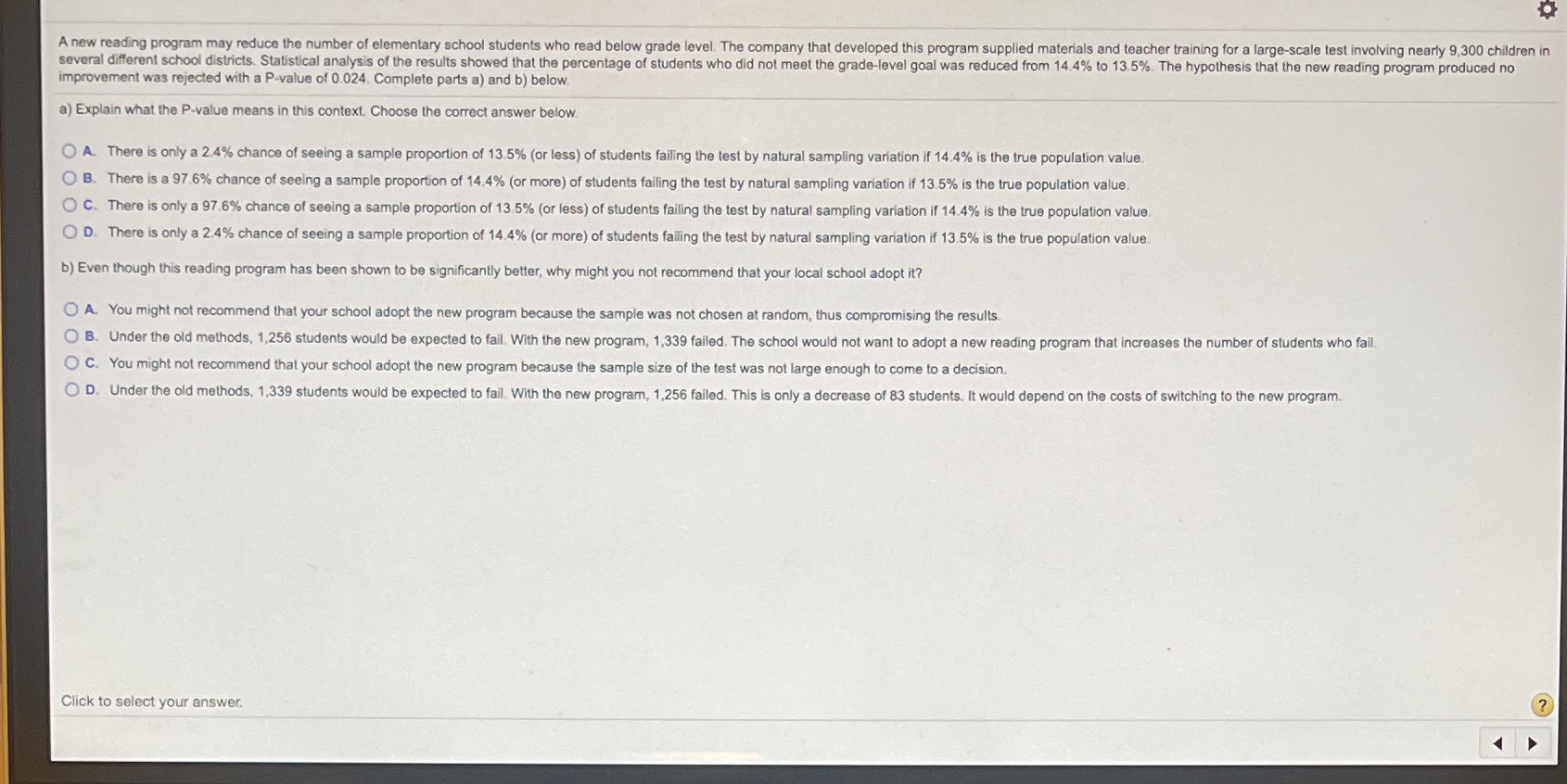I would appreciate help with the answers to all questions please. Thanks in advance.
A new reading program may reduce the number of elementary school students who read below grade level. The company that developed this program supplied materials and teacher training for a large-scale test involving nearly 9,300 children in several different school districts. Statistical analysis of the results showed that the percentage of students who did not meet the grade-level goal was reduced from 14.4% to 13.5%. The hypothesis that the new reading program produced no improvement was rejected with a P-value of 0.024. Complete parts a) and b) below. a) Explain what the P-value means in this context. Choose the correct answer below. O A. There is only a 2.4% chance of seeing a sample proportion of 13.5% (or less) of students failing the test by natural sampling variation if 14.4% is the true population value. O B. There is a 97.6% chance of seeing a sample proportion of 14.4% (or more) of students failing the test by natural sampling variation if 13.5% is the true population value. O C. There is only a 97.6% chance of seeing a sample proportion of 13.5% (or less) of students failing the test by natural sampling variation if 14.4% is the true population value. O D. There is only a 2.4% chance of seeing a sample proportion of 14.4% (or more) of students failing the test by natural sampling variation if 13.5% is the true population value b) Even though this reading program has been shown to be significantly better, why might you not recommend that your local school adopt it? O A. You might not recommend that your school adopt the new program because the sample was not chosen at random, thus compromising the results. O B. Under the old methods, 1,256 students would be expected to fail. With the new program, 1,339 failed. The school would not want to adopt a new reading program that increases the number of students who fall. O C. You might not recommend that your school adopt the new program because the sample size of the test was not large enough to come to a decision. O D. Under the old methods, 1,339 students would be expected to fail. With the new program, 1,256 failed. This is only a decrease of 83 students. It would depend on the costs of switching to the new program. Click to select your







